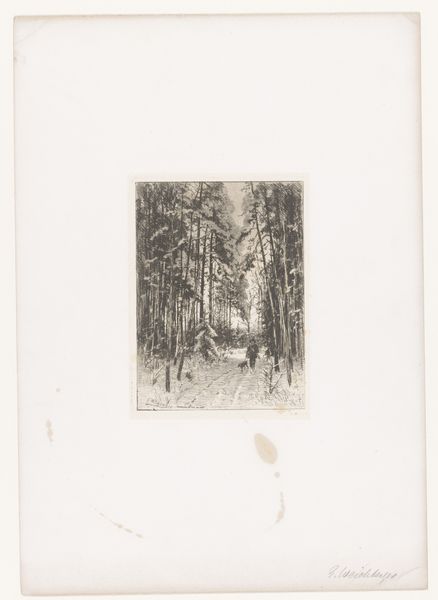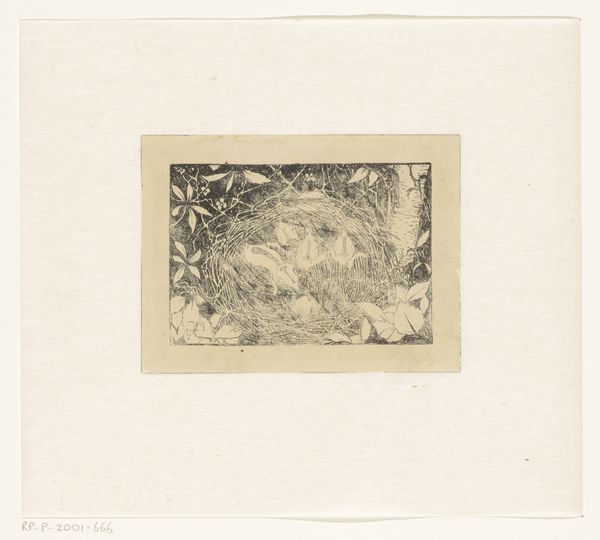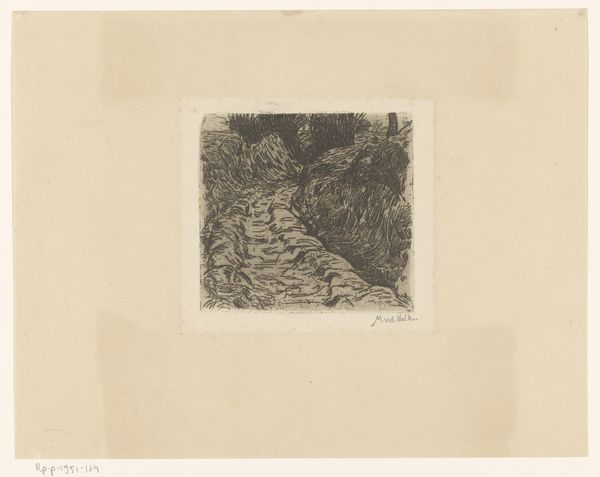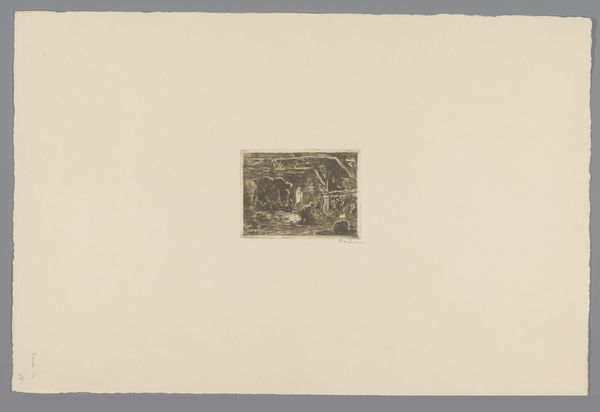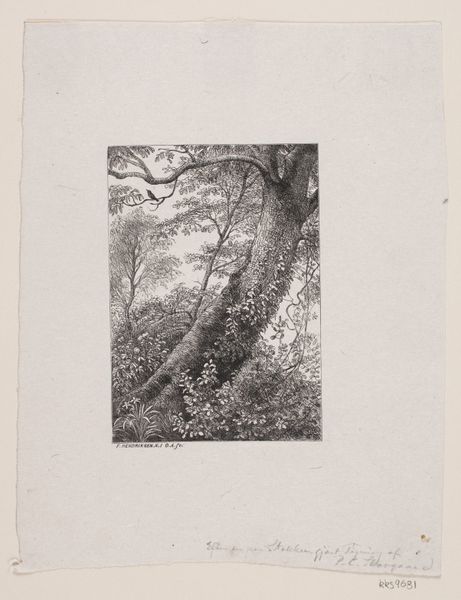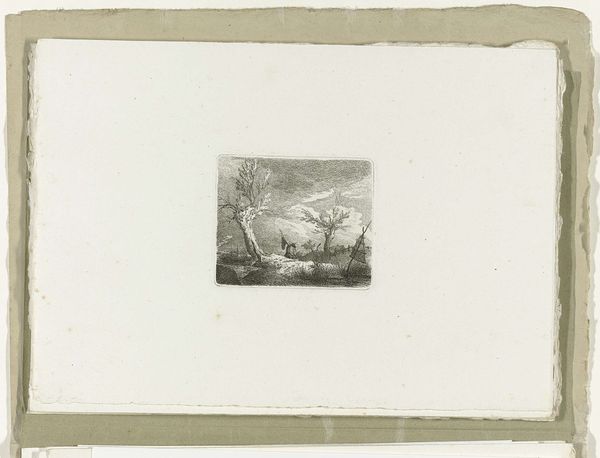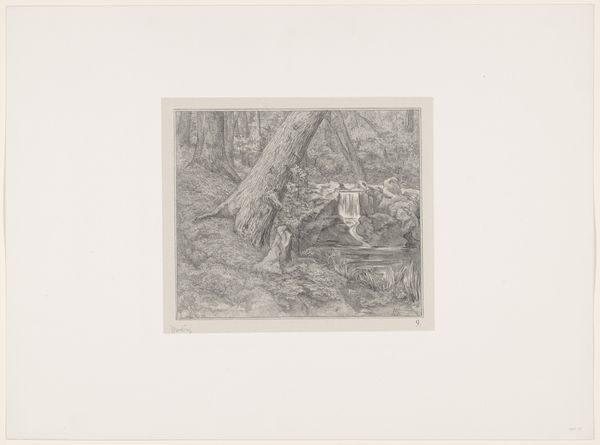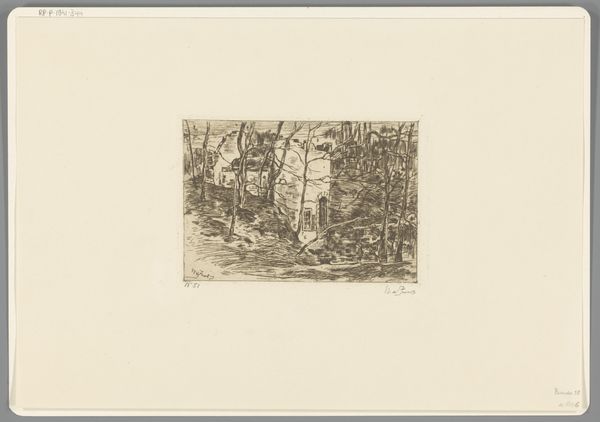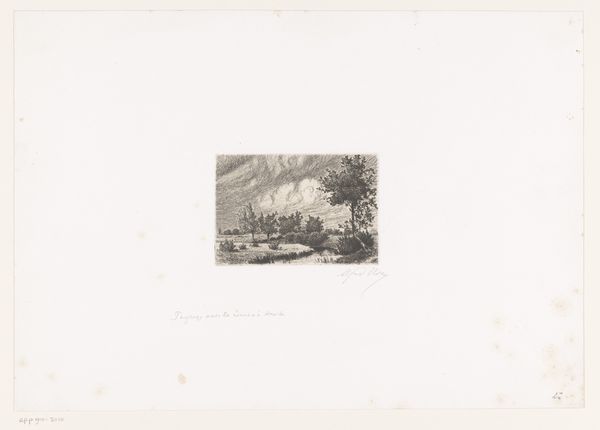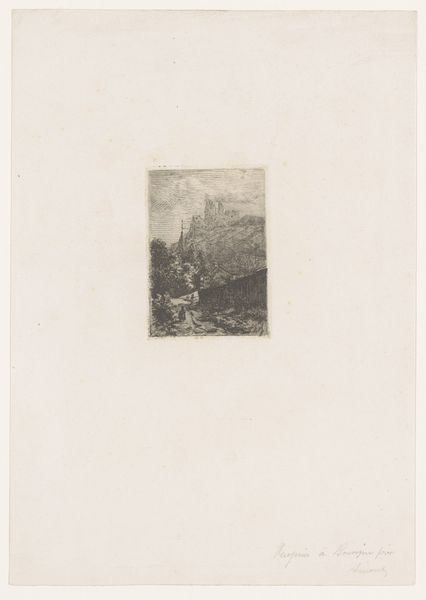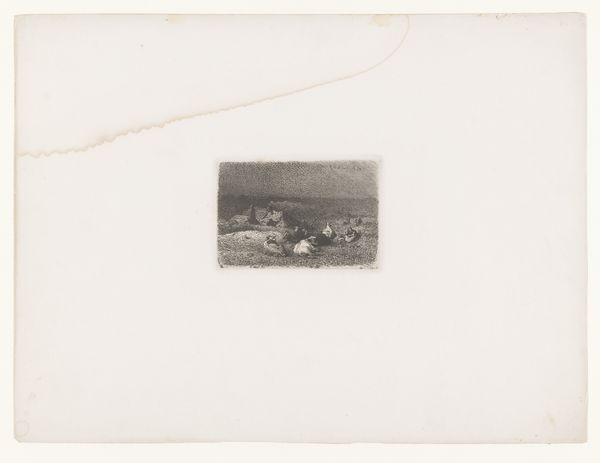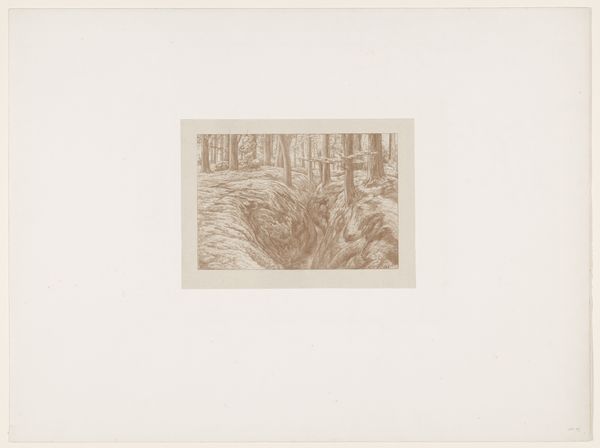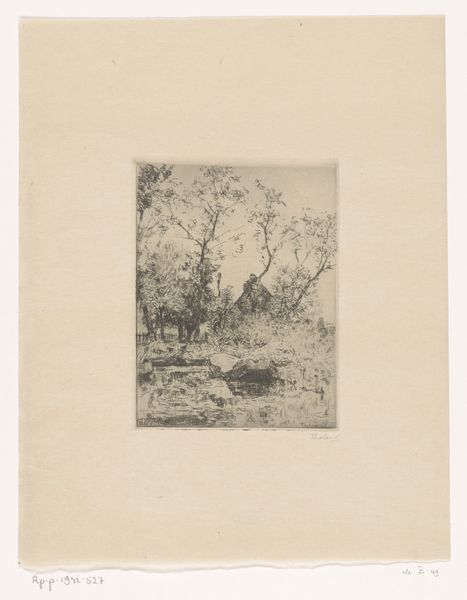
drawing, print, etching, paper
#
drawing
# print
#
etching
#
landscape
#
paper
#
rock
#
forest
Dimensions: height 102 mm, width 136 mm
Copyright: Rijks Museum: Open Domain
Curator: Here we have Jos Ratinckx’s etching, “Twee stenen in een boslandschap,” or “Two Stones in a Forest Landscape,” believed to be created sometime between 1870 and 1913. The piece renders exactly what the title implies—two rocks nestled in a wood. What are your first impressions? Editor: Intimate and slightly melancholic. The tonal range in the etching is subtle but effective. The darker foreground emphasizes the textured surfaces of the stones, contrasting against the softer, almost ethereal, light filtering through the trees. Curator: Notice how the composition draws the eye toward the rocks themselves. They become almost anthropomorphic, huddled together. The artist really plays with textures here, doesn’t he? Editor: Definitely. You can practically feel the rough surfaces of the stone, even sense the cool dampness of the forest floor. The use of line in the trees—vertical strokes, mostly—creates an echo of upright posture in the stones. Did Ratinckx want to evoke the human experience? Curator: I’d say so. The strategic arrangement of the linear perspective, in particular the depth achieved through layering the foliage, guides the viewer’s sight to the place that is the most visually complex—a strategy that privileges organic detail as opposed to, say, narrative symbolism. This complexity lends a great sense of presence to these otherwise ordinary forms. Editor: Yes! And that dark stream in the front suggests an active space, yet a reflective mood pervades. What if the rocks are souls waiting to cross? Curator: A romantic thought. What’s undeniable, however, is that through precise articulation and a keen sense of form, Ratinckx elevates a commonplace woodland scene into something evocative, both visually arresting and imbued with a feeling of serenity. Editor: It makes me think about being grounded, you know? Like, connected to something solid in the midst of all the chaos, but still feeling the flow of change. Thank you. I think I understand a little bit more about my own self today. Curator: An insightful observation. I find this piece to be a fine example of the formal tensions between representation and subjective interpretation that were so central to the landscapes of the era. Thank you for your consideration.
Comments
No comments
Be the first to comment and join the conversation on the ultimate creative platform.
